What Is Ketamine?
Ketamine is a medical and veterinary psychoactive drug used for pain relief and anaesthesia of humans and animals. In the western world, it is more likely to be used as a veterinary anaesthetic, particularly for horses or larger species. The absence of respiratory failure associated with ketamine makes it the analgesic of choice in developing countries. More conventional anaesthetics are used where electricity and anaesthetics machines are readily available.
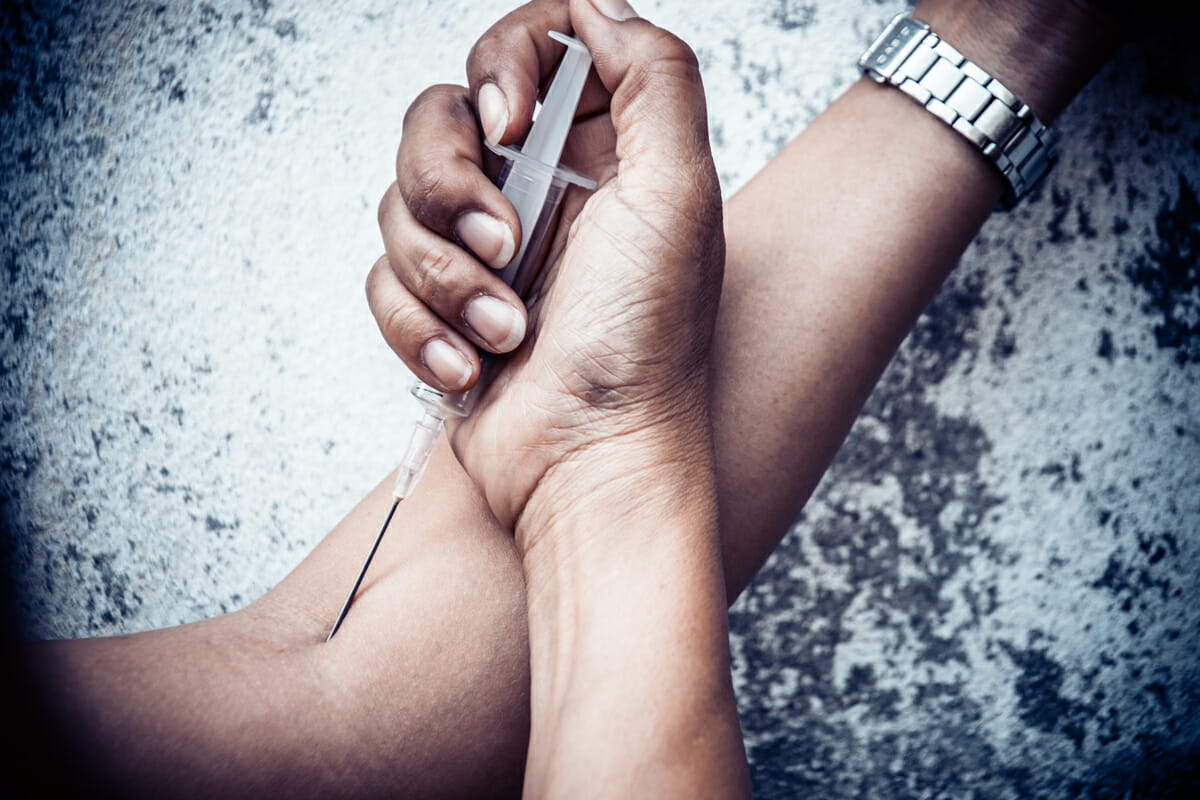
For the same reason, the drug is also routinely used in war zones and environmental disaster sites. (1) Ketamine can be very useful in treating children who have suffered from trauma such as burns or dental surgery. It produces a unique state in between general anaesthesia and deep sedation. (2) This state is known as dissociative anaesthesia, which refers to the dissociation between the limbic and thalamocortical systems.
The limbic system is partially responsible for regulating emotions, and it receives sensory input via the thalamus. Ketamine is an arylcyclohexylamine, which means it acts as an antagonist of glutamate receptors of the N-methyl-D-aspartate sub-type. It can be used illegally by people to get high due to its psychedelic effects. It can be snorted, taken as a pill or injected. The dosage has a significant impact on the results, which range from hallucinations to sedation.
Call our admissions line 24 hours a day to get help.
Legal Status of Ketamine — Class B
It is believed that ketamine use is on the rise in the United Kingdom, with a 30% rise in drug seizures from the previous year seen in 2018. (3) In the United Kingdom, drugs are divided into three categories which reflect the level of harm: A, B and C. The drug was added onto the list of controlled substances in 2006 when it was made a Class C over 50 years after its inception. Following advice from the drug advisory council to the government, ketamine was upgraded to a Class B in 2014. (4)
When misused, the drug can cause severe physical and psychological side effects. It is much cheaper for people to obtain than a drug such as cocaine, making it popular with young people. These factors contributed to the change in classification. Other Class B drugs include cannabis, speed and mephedrone.
Chemical Formula C13H16ClNO
Ketamine is a white crystalline powder that can be administered intravenously, nasally or orally.
It is an arylcyclohexylamine that works by antagonising N-methyl-D-aspartate (NMDA) receptors. These receptors are crucial in causing a glutaminergically excitatory response, and this action is thought to be the reason for its analgesic and anaesthetic effects.
https://pubchem.ncbi.nlm.nih.gov/image/imgsrv.fcgi?cid=3821&t=l(5)
Analysing the chemical makeup of ketamine
Ketamine is a compound with chiral properties. It is available in two forms, as a racemic mixture and an s isomer. The latter is approximately half as potent as the former as an analgesic and anaesthetic, and the s isomer also has a higher rate of metabolism. The majority of available forms of the drug include a racemic mixture, but Ketanest S contains only the s isomer. (4)
Ketamine Brands and Other Names
- Ketalar
- Vetalar
- Ketaset
- Ketaject
- Ketanest
- Ketanest S
- Ketalin (Mexico)
- Ketmin (India)
- Soon-Soon (Taiwan)
- Calypsol (Many countries)
- Narkamon
Street Slang for Ketamine
- Special K
- Vitamin K
- Lady K
- KitKat
- Cat Valium
- Jet K
- K
Why Do People Use A Prescription Veterinary Anaesthetic?
Ketamine was synthesised by American scientist Calvin Stevens in 1962 as a derivative of phencyclidine (PCP). PCP is an anaesthetic that was developed in 1926 but proved troublesome for use in humans. Side effects such as severe hallucinations, delirium, delusions and even psychosis were observed. The observed impact from ketamine use was much milder than that brought on by PCP, so ketamine became a popular choice for veterinary and medical applications.
The drug was patented for human and animal use in 1966, and the FDA approved it for human consumption in 1970. During this time, drug use was in vogue, and ketamine was widely used for recreational and medical purposes throughout this time. Books were released in the late 1970s chronicling the authors’ individual experience of ketamine and how it enabled them to explore their inner psyche.
While recreational use of the drug has been widespread for decades, it was only recognised as a drug of abuse in 2006. It is cheap and readily available due to the many medical purposes it serves throughout the world. These factors are thought to be the main reasons why people recreationally use a drug that is predominantly referred to in popular culture as a horse tranquiliser. (6)
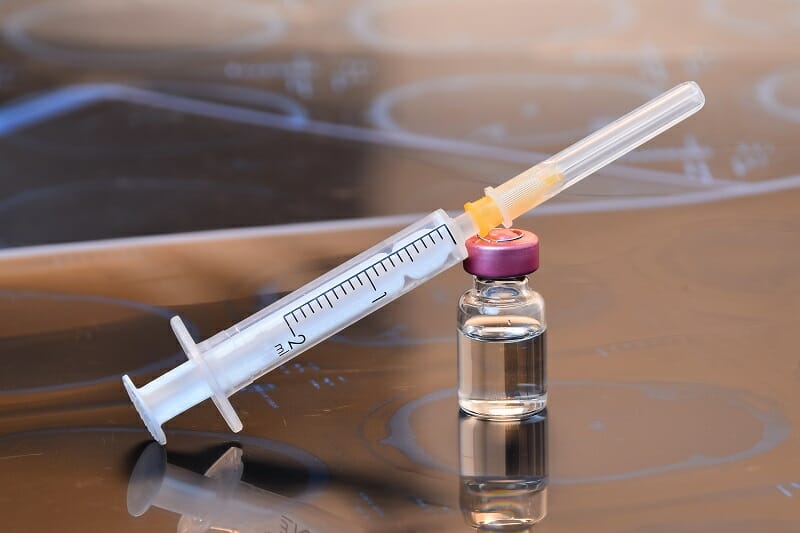
Call our admissions line 24 hours a day to get help.
How Do You Diagnose Ketamine Addiction?
Some sources state that ketamine addiction is rare; however, this is a reductive viewpoint. It is regularly noted that the drug is not physically addictive like opioids or alcohol. (7) (8) Such sources often contradict themselves by pointing out that stopping ketamine after prolonged use causes withdrawal symptoms. While the brain may not become reliant on the effect the drug has on neurotransmitters, continual use changes the chemical balance of the mind.
Tolerance is the best indicator of whether someone is developing an addiction to the drug. If the individual keeps using the medication, their tolerance builds and they require increasing amounts of it to get the desired effects. Some people may use ketamine on occasion recreationally and not feel any cravings, while others develop a habit. If someone is regularly taking the substance despite negative consequences, they most likely require medically assisted detoxification.
What is the neuropsychology of ketamine addiction?
Ketamine affects the NMDA, GABA, D2 and 5-HT receptors. Activation of the latter is thought to be responsible for the drug’s hallucinogenic effect.
Ketamine also affects the mu delta for sigma opioid receptors and monoamine transporters. It is due to this complex neurochemical profile that the drug takes effect as an analgesic, dissociative anaesthetic and psychostimulant.
Some people find the effects of ketamine highly pleasurable, and this creates a drive to continue using the drug. Most substance abuse disorders are caused by this simple function. It is usually a strong desire in people suffering from substance dependence to escape anxiety, worry, depression or some other form of emotional discomfort.
How Does A Ketamine High Feel?
The most common method for administering ketamine is through nasal ingestion of the powder. Effects can be felt almost immediately and, as with all drugs, vary from user to user. At low recreational doses, the drug actually increases the heart rate. It also causes changes in perception and symptoms that are similar to psychosis. While some people enjoy this feeling, many would find it distressing.
Ketamine is not a drug that should ever be used without strict medical supervision.People who use the substance as a party drug describe feelings of enhanced perception, relaxation and increased sociability and enjoy the sensations of disassociation. While high on the drug, people report the impairment of speech and executive function. In larger doses, individuals report feeling entirely disconnected from their body. The analgesic properties induce feelings of numbness and can render the user unable to move or speak at all. (11)
How Addictive Is Ketamine?
Ketamine can cause sedative, hallucinogenic and even out-of-body experiences that some people find enjoyable. This makes the drug highly addictive and likely to be abused, especially by people who seek extreme highs. Young people are particularly at risk of developing a dependence on this substance due to its low cost and ready availability. (9) People who use large amounts of ketamine over sustained periods of time are likely to develop cravings and tolerance.
If an individual or loved one is displaying signs such as taking large amounts of the drug and/or constantly seeking out the substance, it is advisable that they seek drug rehabilitation treatment as soon as possible. Ketamine is often used by people who take other substances, especially alcohol, cocaine and so-called club drugs.
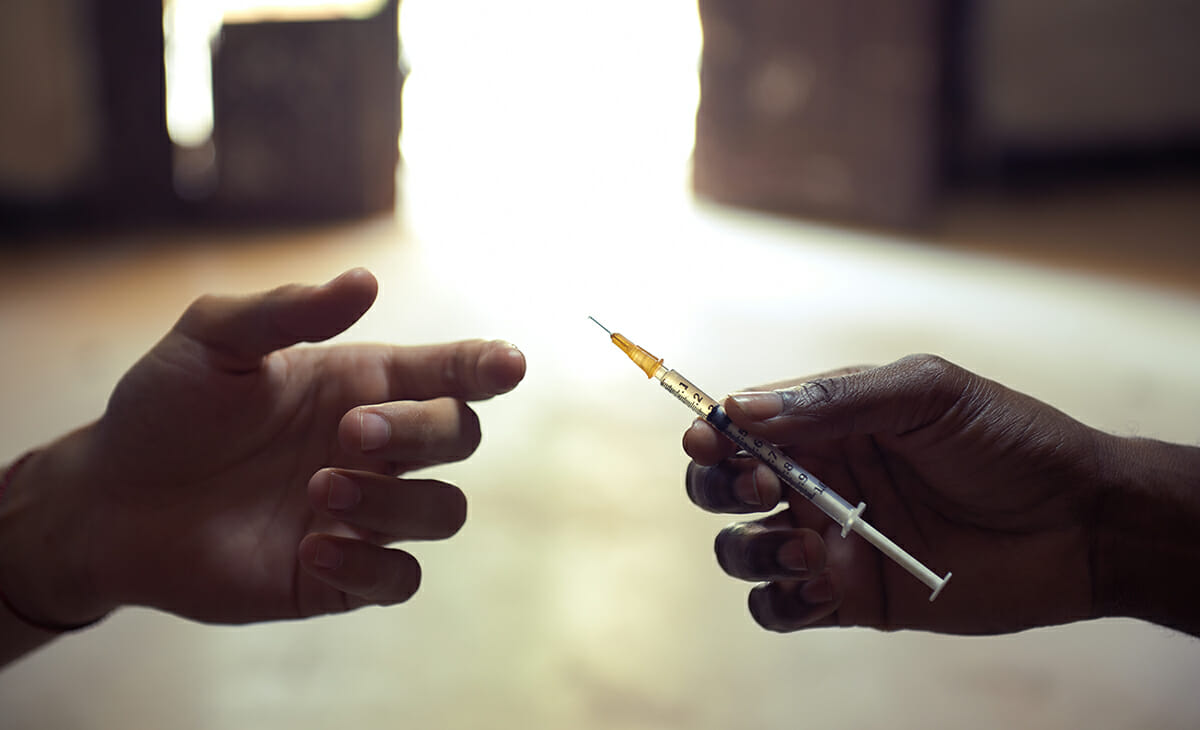
Do you hallucinate?
In low doses, ketamine can bring on minor distortions of the perception of space and time. For example, items may look further away than they are or rooms appear much bigger or smaller than in reality. Other perceptual distortions that happen as a result of taking the drug have been likened to the psychosis present in people who suffer from schizophrenia.
In higher doses, users can experience intense hallucinations and become entirely unaware of their surroundings. This is sometimes referred to as a k-hole, and while some people seek this level of disassociation, it can be extremely dangerous and stressful. For those who have difficulty coping with life, getting into this state can offer an escape. (11)
General Symptoms and Effects of Ketamine Use and Abuse
- Disorientation
- Feelings of detachment/dissociation
- Hallucinations
- Slowed or difficult breathing
- Mood changes
- Depression
- Impaired ability to think or learn
- Nausea and vomiting
- Memory impairment
What Are the Psychological, Behavioural and Physical Signs of Ketamine Addiction?
Physical
The body responds to ketamine in different ways for different people. Those who find that they don’t suffer from the negative effects as much are at a higher risk of developing a dependence on the drug. During intoxication, the individual may look as if they are moving in slow motion due to a lack of motor control. They may also slur their speech and have dilated pupils, slowed breathing, high temperature, fluctuations in blood pressure and nausea.
Some of the physical signs of abuse include:
- An increased tolerance that leads the user to take more of the drug on a more regular basis in order to obtain the same effects.
- Sensations including itchiness, changes in temperature, clammy hands and increased heart rate are caused by the cessation of the drug.
- Fatigue
- Desensitisation to pain
- Difficulty urinating
- Decreased sexual function
- Trouble breathing
- Impaired motor control
- Paralysis
- Loss of consciousness
- Overdose — while rare, ketamine is a medication that is used to euthanise horses. It is a very dangerous drug that is not intended for individual self-administration.
Call our admissions line 24 hours a day to get help.

Psychological
A person will behave unusually while intoxicated on ketamine. They may seem preoccupied with seemingly inane aspects of their surroundings or talk complete nonsense. The effects of ketamine vary significantly depending on the dose. Someone who has not taken much may appear to be chatty and outgoing, while someone who has taken large quantities of the drug may be entirely unresponsive in a catatonic state.
Some behavioural signs of abuse include:
- The majority of people who have abused ketamine have been found to suffer from some form of depression. It is unclear whether those suffering from depression are more prone to using the substance or the drug causes the illness. (12)
- Anxiety
- Paranoia
- Fear
- Memory loss
- Confusion
- Illusions of being able to fly or float
- Hearing and seeing things that aren’t there
- Out-of-body experiences
- Distorted perception of time, space and reality
- Trance-like state
- Intense euphoria
- Inability to concentrate
- Prioritising ketamine over commitments such as work, school or socialising
- Using the drug to escape from stress or difficult feelings. This is often the trigger for many people who go on to develop substance abuse disorders.
- Intensification of existing mental health conditions
Behavioural
With many people, the behavioural symptoms are the most indicative of a serious problem developing. Those who are abusing drugs can become highly adept at hiding their problem. By being aware of the more subtle details of a substance abuse disorder, the problem can be addressed early. The more quickly someone who has developed an addiction to ketamine gets into treatment, the better chance they have of recovery.
Some behavioural signs of ketamine addiction include:
- Using any opportunity to take the drug. Often, what starts as casual recreational use can develop into a situation where the person starts using the drug alone and at inappropriate times.
- Taking ketamine alongside other substances in order to get the best possible high.
- Using needles to inject ketamine. Snorting the drug is already a fast and efficient method of administration; intravenous use is the sign of a serious problem.
- Wanting to stop taking the drug and not being able to.
- Not being honest about how much of the drug is being used.
- Prioritising ketamine use above activities that were previously enjoyable.
- Feeling that ketamine has become the most important aspect of life.
- Obsession with getting the next fix of the drug. People who are addicted to a substance can barely think of anything beyond getting enough of the drug to satisfy their craving. (13)
- Committing most of their time to obtaining, using and talking about the drug
- Having trouble functioning in everyday life such as work or school and continuing to use the drug regardless.
- Suffering from financial problems and continuing to focus all spending power on obtaining the drug.
- Lying to loved ones to obtain funds to buy the drug.
- Loved ones noticing drastic changes in appearance or behaviour as a result of ketamine use.
- Avoiding contact with friends or family members due to shame related to using the drug.
- Social isolation
- Exclusively associating with other people who use the drug and losing more wholesome friendships.
- Poor performance or attendance at school or work that may eventually lead to dismissal.
Ketamine Addiction Problems in Young People
Ketamine use is on the rise among young people in the United Kingdom.
(14) It is a dissociative drug, which means users experience feelings of separation from themselves. Reality becomes distorted and emotional and physical pain is numbed during intoxication. To most people, feeling out of control or as if they are not in touch with themselves is not desirable. Young people are more inclined to take risks due to a lack of experience and comprehension of consequences.
Young people face increasing pressures with high expectations from school, social media and environmental issues all falling on their shoulders. While there has been an increased focus on mental health in recent years, these campaigns do not necessarily reach young people. Peer pressure is one of the most significant reasons any young person starts to dabble in dangerous drug use, and the young are more susceptible to it.
Another attractive thing about ketamine its relatively low price. While a gram of cocaine can cost between £50 and £100, the same amount of ketamine is around £20 to £30. (15) The effects of the drug wear off quickly, usually between half an hour to a couple of hours after ingestion, depending on the dose. This is a positive for young people because they can go to a party and stop in time to get home and appear sober. (16)
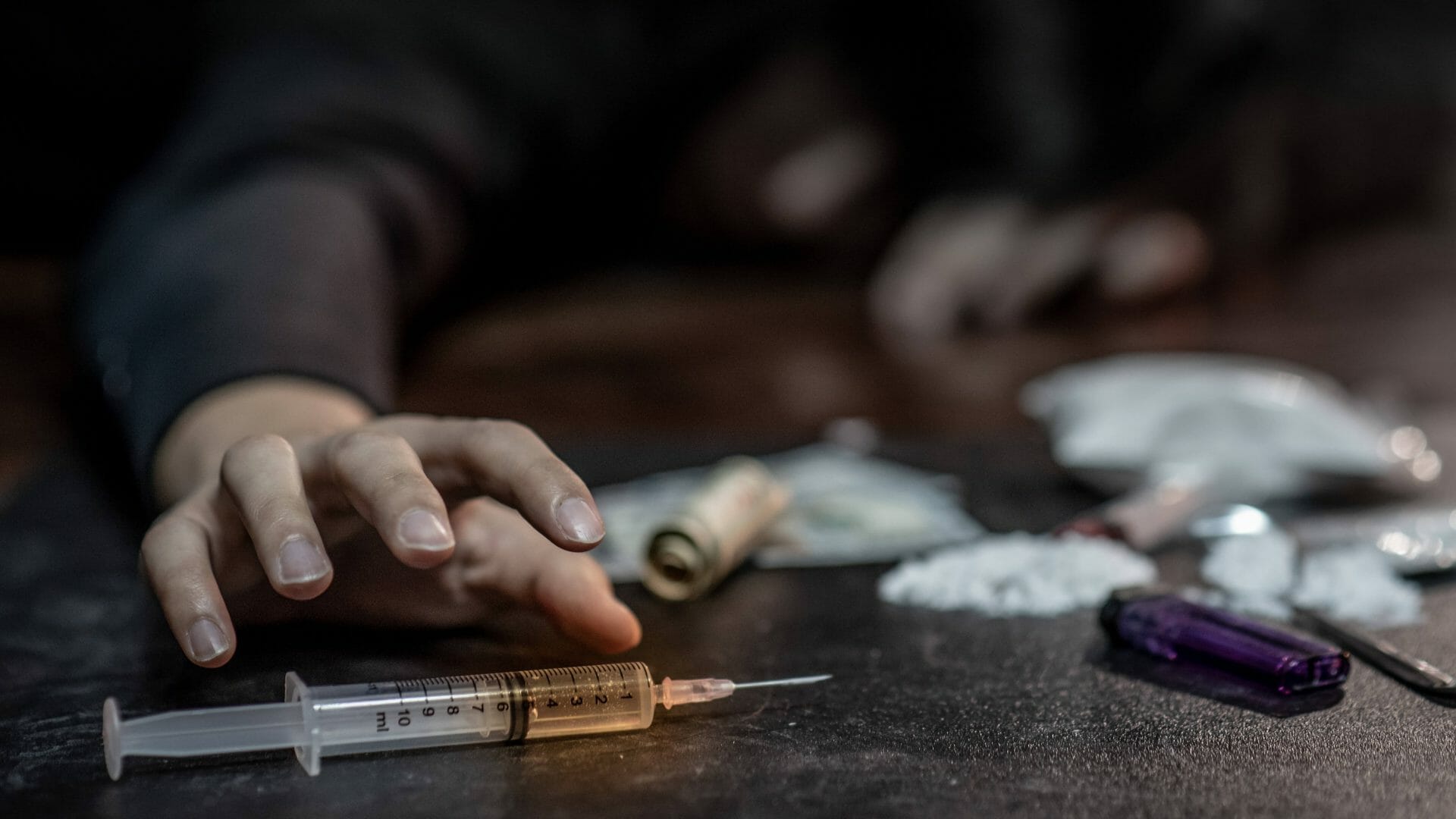
How to tell if your child is abusing ketamine
It is important to understand that in the case of teenage drug-taking, punishment is not an appropriate action to take.
Substance abuse is a health problem and must be addressed by medical professionals. Detoxification and treatment including therapy are usually the best courses of action. Therapy involves gaining an understanding of why the individual is using in the first place and helping them to develop new coping strategies.
If your teenager comes home from parties having drunk any alcohol or smoked cannabis, the symptoms are obvious and they will smell of the substance. Ketamine use is more subtle because the effects wear off quickly and the drug only has a faint chemical odour. They may display symptoms of a comedown and be moodier than normal or have clammy hands and dilated pupils, and they will probably rub their nose as a result of irritation caused by snorting the drug.
Being astute and knowing your child’s behavioural patterns should make noticing drug abuse fairly easy for parents. Young people can be highly deceptive, however, so knowing the specific signs is important. Addiction can be extremely frightening, especially when a young person is involved. With professional help, it can be overcome for good and life can return to being healthy and balanced.
Call our admissions line 24 hours a day to get help.

Co-Occurring Disorders and Ketamine Abuse
Ketamine is a complicated drug, and its users have diverse backgrounds. Many links to mental health disorders such as anxiety and depression have been made. It is unclear whether these links occur as a result of the effect ketamine has on the balance of neurotransmitters on the brain or whether these disorders caused the individual to use the drug in the first place.
Many people who use ketamine for a prolonged period of time find that they suffer from mental health problems. The majority of people also go on to develop problems with their bladder and urinary tract. Studies have found that abusing the drug depletes grey matter in the brain and can lead to a host of serious health issues. (17)
Ketamine addiction regularly presents alongside alcoholism or another substance dependence disorder. Being addicted to more than one substance concurrently is becoming increasingly common as people seek out more profound highs. Combining alcohol or benzodiazepines with ketamine, as often happens at raves or parties, can lead to respiratory failure.
These substances intensify the effects of ketamine and put the user under increased risk. It is integral that an individual who enters treatment is open and honest with the medical practitioner about all their symptoms and their drug use. Getting help for one problem without addressing everything else can quickly lead to relapse. Underlying mental health problems can be a trigger for many people to use drugs in the first place.
The Short-Term Side Effects of Ketamine Abuse
- Disorientation
- Dizziness
- Auditory or visual hallucinations
- Double vision
- Nightmares
- Impaired judgment
- Increased heart rate
- Nausea
- Vomiting
The Long-Term Side Effects of Ketamine Abuse
- Cognitive impairment and memory problems
- Impaired psychological well-being marked by increased depression
- Impaired visual memory, short-term memory and verbal memory
- Urinary tract problems

Ketamine Use and Psychosis
There are many claims that have been made about ketamine and how it relates to certain psychological disorders of the brain.
It is widely accepted that a ketamine trip resembles the psychosis that is present in some patients who suffer from schizophrenia. It is also believed that prolonged and chronic use of the drug can, like most substances that alter a person’s neurotransmitters, induce psychosis.
It has been shown that a dose of ketamine induces an increase in psychotic symptoms in both individuals who suffer from schizophrenia and those who don’t. That said, the schizophrenic group only saw positive increases in psychosis, while the normal group saw both negative and positive reactions. There is thought to be a profound similarity in ketamine-induced symptoms and the pre-existing positive symptoms of schizophrenics, such as hallucinations, thought disorders and delusions.
It was previously believed that amphetamines were an accurate human psychosis/schizophrenia drug model. It has recently been discovered, however, that PCP-like drugs demonstrate a broader range of psychotic symptoms. (19, 20) These studies have demonstrated to scientists that the NDMA neurotransmitter that is stimulated by ketamine plays a significant role in all forms of psychosis in humans. (20)
Ketamine Withdrawal and Detox
Those who are in the throes of ketamine addiction will find their cognitive ability is impaired.
The brain becomes rewired when someone is suffering from addiction, which leads the person to be entirely preoccupied with obtaining the substance. Detoxification is the only way to get the person into a position where they are ready to fight for recovery. This type of treatment is best undertaken in a clinical setting with a team of qualified addiction specialists.
In a medical setting, the service user may be given medication to help them to endure withdrawal symptoms. This medication is not to be used in the long term as a replacement for ketamine; rather, it is tapered off slowly until the person is physically and mentally ready. Stopping ketamine suddenly after prolonged use can cause intensely uncomfortable withdrawal symptoms, including:
- Extreme cravings
- Shakiness
- Irregular heartbeat
- Sweating
- Depression
- Paranoia
- Increased heart rate
- Rapid breathing
Once the substance has been flushed from their system, they are ready for the rehabilitation aspect of treatment. It is often easier for people to go through this process in a medical setting where there is no access to drug dealers or triggers brought on by day-to-day life.
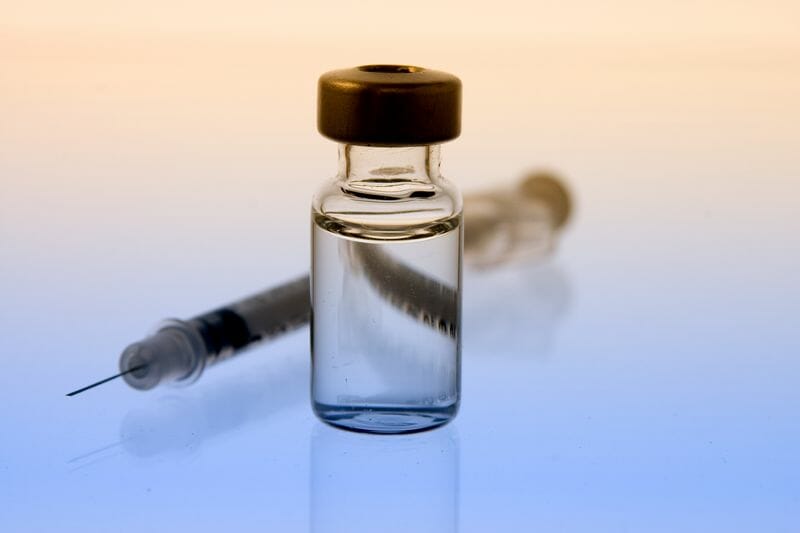
Treatment Options for Ketamine Addiction
The type of treatment an individual seeks for addiction to ketamine should depend on the amount of time they have been using the drug and how heavily they have been using. For those who have realised they have a problem at an early stage, outpatient treatment may be sufficient. For chronic users who have been taking the drug for a long time, inpatient treatment is usually the best option. Both follow a similar structure, but inpatient treatment involves residential care.
Firstly, the service user must go through detoxification. This clears the system of all traces of the drug and gives the individual a perfect starting point for recovery. At this point, it is extremely important that the person takes their recovery seriously and is committed to getting better. Drug rehabilitation is only effective if the person truly wants to get clean.
During inpatient treatment, the service user stays in a clinic with 24-hour support from a medical team. They must follow the rules, and the days are broken down into a clearly defined structure that helps them get into a healthy routine. Outpatient care has similarly structured days; the only difference is that the patient goes home at night. For a chronic user, the temptation to get the drug may be too strong, hence inpatient treatment is recommended.
Medication That Can Aid Ketamine Addiction Recovery Efforts
There have been early trials that suggest that using naltrexone can be effective in tapering people who use ketamine off the drug. Naltrexone is most commonly used to counteract the effects of opioids. Another type of drug that can be used in the easing of withdrawal symptoms is a benzodiazepine such as diazepam. While this works on different neurotransmitters than ketamine, it can soothe the uncomfortable sensations associated with withdrawal symptoms.
Some individuals may be given some form of opiate to help them stop taking the drug. The mechanisms of ketamine and opiates share many commonalities. Both drugs are painkillers that cause a surge in endorphins and induce euphoria in people who use the drugs. It has been known for a long time that ketamine stimulates the opioid receptors, but the significance of this has only been realised in recent years.
Treatment Facilities
There are various types of treatment facilities, ranging from small suburban centres to larger, city-based clinics. For people who are looking for more luxurious surroundings in which to initiate their recovery process, these types of facilities are also available.
Treatment for ketamine addiction is available from the NHS; however, this is almost exclusively outpatient treatment, even for those with chronic illnesses. It can be a very difficult and stressful process to receive treatment from the NHS due to severe cuts in funding to the service. For someone who is going through a debilitating addiction, this can be off-putting. Choosing a private clinic ensures the problem is addressed urgently and there is no waiting time.
Ketamine Dependence Rehab Process
Once the service user has gone through detoxification, the drug rehabilitation process begins.
People mostly think of rehab as being for people with more traditional substance dependencies such as alcoholism or opiate addiction. There is no shame in facing up to a problem that needs treating. More and more people are becoming addicted to ketamine each year, and its use among young people is growing at an alarming rate.
During rehab, the service user lives in a communal setting with people suffering from the same or a similar illness to them. Mealtimes, exercise and recreational activities are done in groups that promote socialising. Many drug users find solitude is very conducive to addiction and the less they socialise, the more they take the drugs. These group sessions can be extremely valuable in showing the service user the importance of being social to their mental health.
Treatment for ketamine abuse doesn’t usually require the prolonged use of medication, so the individual is totally drug-free during rehab. They attend a mixture of individual and group therapy to address what made them use the drug in the first place and share the stories with people who have been through something similar. There are also daily workshops designed to teach the service user coping strategies and methods to avoid relapse.

Ketamine Abuse Facts & Statistics
- Police seizures of ketamine increased by 30% in the year between 2017 and 2018. This is out of line with an overall 2% decrease of drug seizures by the police.
- In 2014, when the drug was upgraded from a Class C to a Class B, a dramatic decrease in seizures of the substance by police was observed. This is also thought to be partially due to a crackdown on producers of the drug in India.
- The proportion of people aged 16 to 59 who had taken the drug in the year 2017-2018 went from 0.4% the previous year to 0.8%. This equates to 141,000 more people using the drug in one year.
- The age group implicated the most in this sharp rise in ketamine use was young people aged 16 to 24. In 2016-2017, 1.2% of this age group admitted to using the drug, which shot up to 3.1% in 2017-2018.
- A gram of ketamine that has been cut with other unidentified substances can sell for as little as £10 a gram. Even in its pure form, the most a person would pay for the substance is £30. This means the drug is accessible to young people, poor people and other more vulnerable members of society. (3)
- Ketamine is the fourth most consumed illicit drug by young people in the United Kingdom. (4)
Sources
- (1) https://drugscience.org.uk/drug-information/ketamine/#154934739381268
- (2) https://www.ncbi.nlm.nih.gov/pmc/articles/PMC2148883/pdf/anesthprog00225-0014.pdf
- (3) https://www.theguardian.com/society/2019/feb/04/ketamine-use-by-young-on-rise-official-figures-for-england-reveal
- (4) https://assets.publishing.service.gov.uk/government/uploads/system/uploads/attachment_data/file/264677/ACMD_ketamine_report_dec13.pdf
- (5) https://pubchem.ncbi.nlm.nih.gov/compound/Ketamine#section=Melting-Point
- (6) https://www.birmingham.ac.uk/research/perspective/ketamine-cotton.aspx
- (7) https://www.talktofrank.com/drug/ketamine#addiction
- (9) https://www.healthline.com/health/addiction/risk-factors
- (10) https://www.theguardian.com/science/sifting-the-evidence/2016/jul/14/what-are-the-effects-of-ketamine
- (11) https://www.verywellmind.com/what-is-a-k-hole-21861
- (12) https://www.independent.co.uk/voices/drugs-mdma-ketamine-addiction-mental-health-grief-a8769321.html
- (13) https://www.bbc.co.uk/news/av/uk-england-kent-47310875/mother-s-ketamine-plea-after-drug-use-rises-among-young-people
- (14) https://www.drugwise.org.uk/ketamine/
- (15) http://www.healthtalk.org/young-peoples-experiences/drugs-and-alcohol/ketamine
- (16) https://www.ncbi.nlm.nih.gov/pubmed/11557159
- (17) https://www.sciencedirect.com/science/article/abs/pii/0893133X9400131I
- (18) https://www.nature.com/articles/1395017.pdf?origin=ppub
- (19) https://www.wired.com/story/ketamine-opioid/
- (20) https://www.bbc.co.uk/news/uk-44482290
Call our admissions line 24 hours a day to get help.
No matter where you live, there is a drug rehab center that can help you overcome your addiction. We'll help you find it.
Select a County



